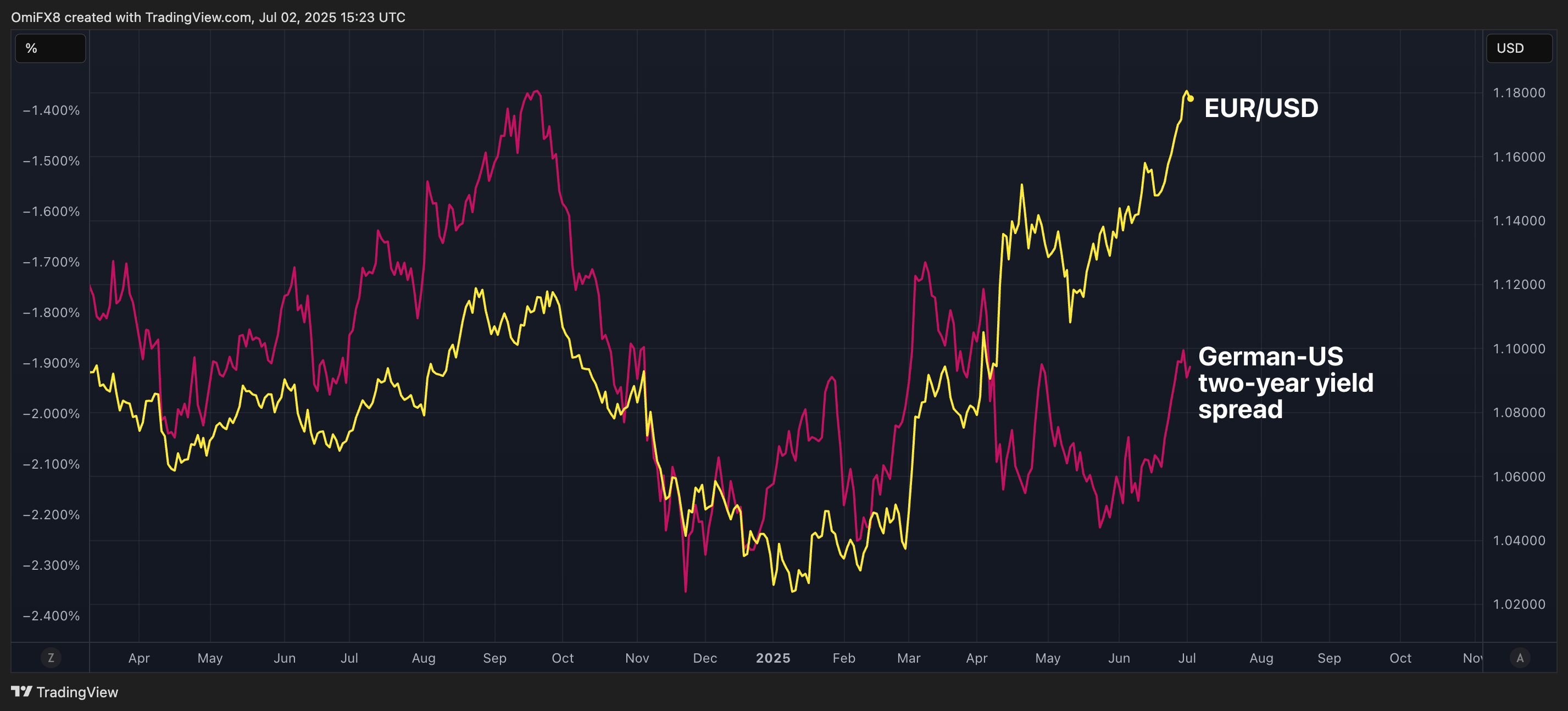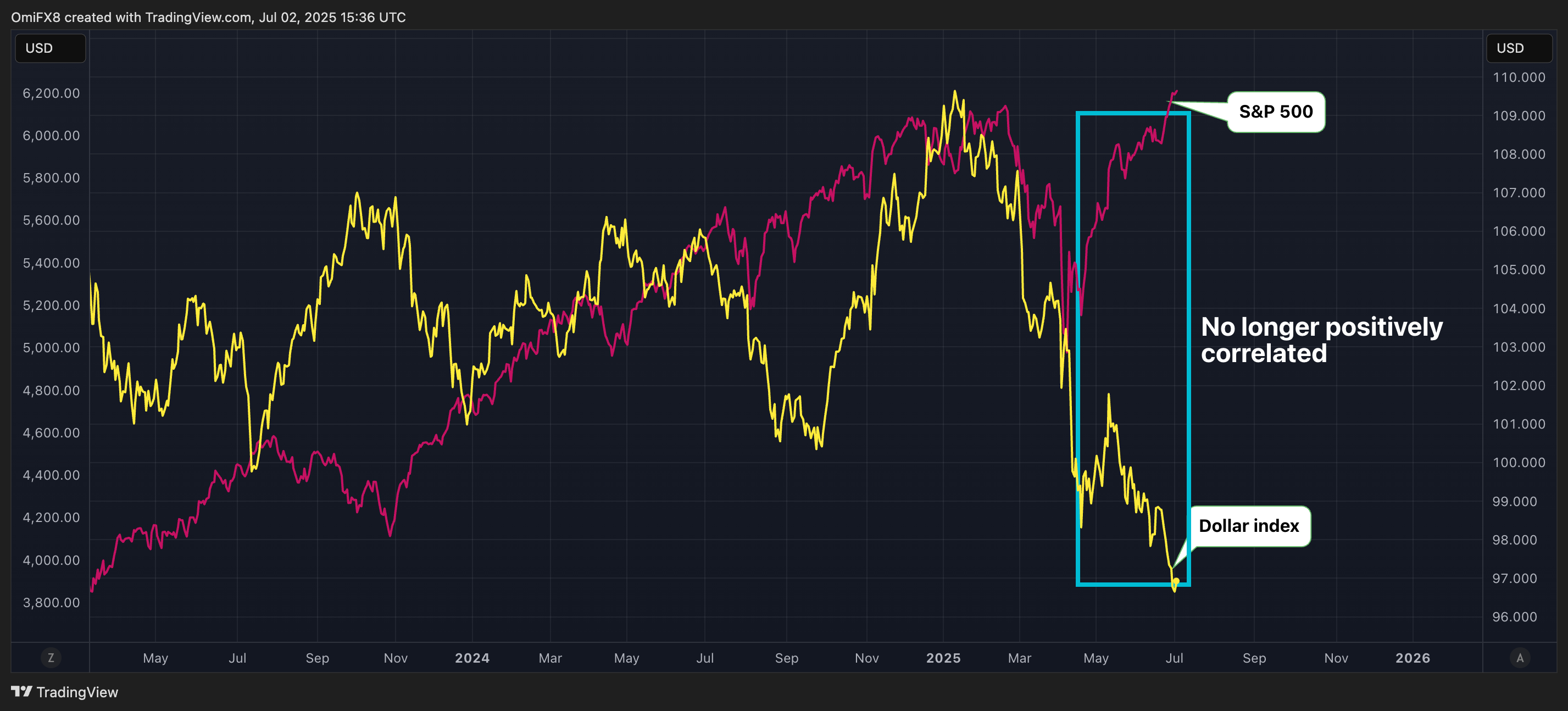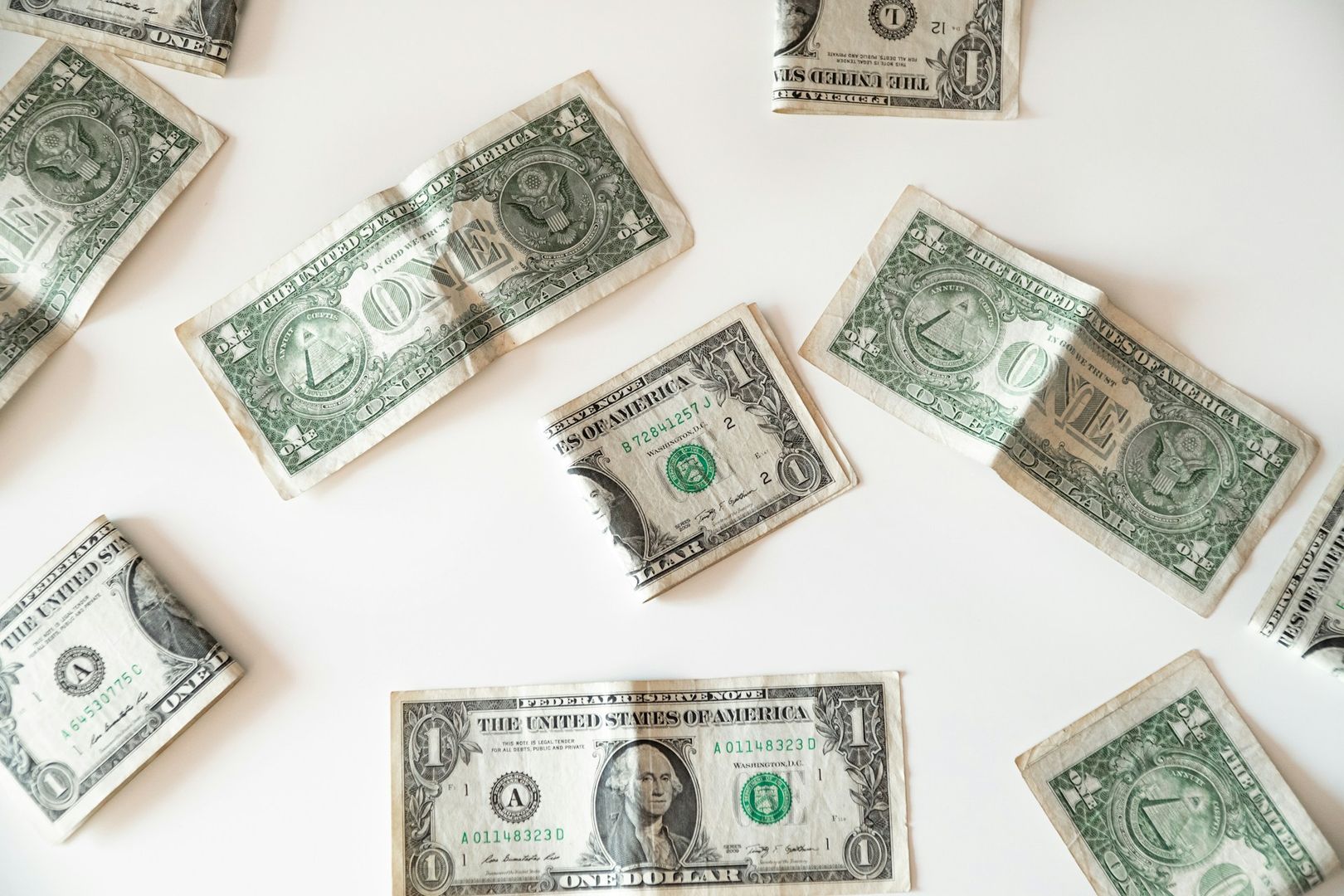Welcome to CoinDesk's weekly macro column, where analyst Omkar Godbole writes about his macro observations and analysis in the broader markets. The views expressed in this column aren't investment advice.
A major currency pair, which is barely considered volatile, is now rivaling notoriously explosive bitcoin's price performance—unimaginable, right?
Not anymore.
In June, EUR/USD, the most liquid FX pair in the world, rose nearly 4% to 1.1786, outperforming bitcoin's (BTC) 2.4% gain. Remarkably, both assets are nearly neck and neck in year-to-date performance, each up over 13%.
Some observers believe EUR/USD still has room to run higher, a positive sign for EUR-pegged stablecoins, which have already benefited from the single currency's surge.
"EUR/USD could face resistance probably in the 1.22/1.23 area," Marc Ostwald, chief economist and global strategist at ADM Investor Services International, said, explaining that the focus is on Germany loosening its debt brake, which is seen as "growth positive by most people."
German exceptionalism and U.S. fiscal scare
The term U.S. exceptionalism—the relative attractiveness of dollar assets, underpinned by the fiscal spending of the Biden era—has historically helped the greenback. However, that story is now showing signs of reversal under President Donald Trump’s second term. Concerns over widening budget deficits and soaring debt-servicing costs have sparked what some now describe as a budding "fiscal scare."
Now, the exceptionalism narrative might be shifting to Germany.
That's because early this year, Germany announced a landmark fiscal plan comprising an exemption of defence spending (over 1% of GDP) from the debt brake, a 500 billion euro infrastructure fund to be deployed over 12 years, and 100 billion of which will be immediately routed to the Climate Transition Fund.
The remaining amount is for additional infrastructure investments, with 300 billion euros for the federal government and 100 billion euros for state governments. Lastly, the plan will allow state governments to run annual deficits of up to 0.35% of GDP.
The fiscal package's direct impact on German GDP is expected to be felt from next year, and it's expected to be sticky beyond 2027, with positive spillover effects for other Eurozone nations.
This is now changing the conversation to European assets, rather than U.S.
"The initial condition was a huge overweight in USD and assets, but now it looks like portfolio allocation toward European equities, with Germany stepping up defence and infrastructure spending," Marc Chandler, chief market strategist at Bannockburn Capital Markets, said in an email.
Policy uncertainty
The focus on growth potential explains why the U.S.-German yield (rate) differential, as an indicator of exchange rate, has fallen to the back burner.
The chart below shows that the historical positive correlation between EUR/USD and the two-year German-U.S. bond yield differential has broken down since late March.

Moreover, higher yields in the U.S. no longer represent a positive economic outlook but are a necessity to fund deficits.
"The dollar can seem to be decoupled from rates, but I think that another way to frame it is that the U.S. needs to offer a higher premium to compensate for the policy uncertainty and seeming desire for a weaker dollar," Chandler noted.
Rate outlook favors EUR
A potential shift in the yield differential narrative is putting the euro back in the spotlight. Market participants are bracing for a return to fundamentals—particularly rate spreads—yet the outlook may not bode well for the greenback.
"To some extent the rate differential outlook for EUR/USD is not favourable for the USD, if one assumes that the ECB is largely done with rate cuts (perhaps one more), while the Fed could well cut rates up to 125 bps over the next 12-18 months, if U.S. growth continues to be sluggish," ADM's Ostwald said.
The European Central Bank (ECB) has delivered eight quarter-point cuts in a year, yet the euro has rallied against the U.S. dollar. From here on, the focus will be on potential Federal Reserve rate cuts. So far, Powell has held rates steady at 4.25% despite President Trump's repeated calls for ultra-low borrowing costs.
In other words, the rate differential is likely to widen in favor of the EUR.
Need for higher FX hedge ratios
Historically, the USD has offered a natural hedge to foreign investors in U.S. stocks.
So naturally, as the positive correlation between U.S. stocks and the dollar has broken, European pension funds—which account for nearly half of foreign holdings in U.S. equities—and other investors are forced to increase their FX hedging to protect portfolio returns against dollar weakness. According to market observers, this FX hedging strategy could continue to propel the euro higher in the near term.

Let's put the hedging strategy in context. Imagine a European fund with $10,000 worth of investments in the U.S. If the US dollar (USD) gets weaker compared to the euro (EUR), the fund's investment loses value when converted back to euros.
To hedge against this currency risk, the fund might consider hedging part of that investment by taking short bets on the dollar via forwards, futures or options, adding to the dollar's bearish momentum.
"Using the monthly Danish pension flow data as a European proxy, April saw a spike higher in the FX hedging ratio from 61% in January to 74% in April. We’ve seen 80% levels before, so there is room for higher and also more consistent FX hedging for all European investors, that will naturally see EUR selloffs on newsflow faded on a day-to-day basis until that flow peaks. We’re not there yet, but we’re a lot closer," Jordan Rochester, head of FICC strategy at Mizhou, recently explained in a LinkedIn post.
According to Financial Analyst Enric A., fewer than 20% of European institutions currently hedge their USD exposure, and they will have to do more to stabilize portfolios, which might lead to further USD bearish momentum.
"Higher hedge ratios = more EUR buying, more USD selling," Enric said on LinkedIn.
And to top it off, hedging by other regions' funds may have had the same effect. Chandler cited BIS data while highlighting hedging by Asian funds.
Bottom line: As macro narratives shift toward potential U.S. Fed easing and hedging dynamics exert pressure on the greenback, EUR/USD may remain buoyant despite eurozone growth headwinds.
Read more: Is it time to reduce, hedge, and diversify USD exposure?

 2 months ago
77
2 months ago
77








 English (US) ·
English (US) ·